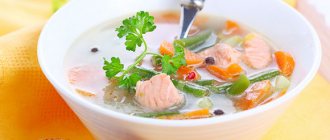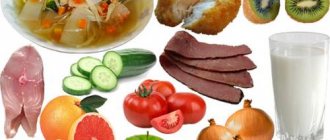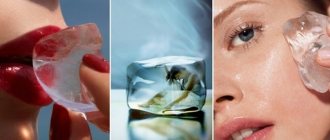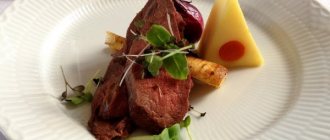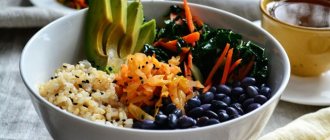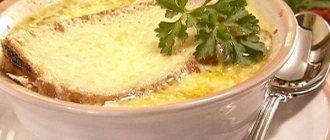Lose weight up to 4 kg in 6 days. The average daily calorie content is 900 Kcal.
Since ancient times, people have been eating the gifts of nature - not only plant and animal food, but also the inhabitants of lakes, rivers, seas and oceans. And today the list of healthy and tasty food is rightfully headed by seafood.
For information, all edible inhabitants of the world's oceans, except fish, are considered seafood. Their typical representatives on our table are shrimp, squid, crayfish, crabs, lobsters (lobsters), octopus, lobsters, oysters, mussels, rapana, scallops, kelp. All seafood is a real storehouse of protein, iodine, easily digestible by our body, many vitamins and microelements, and polyunsaturated fatty acids.
Seafood, along with its exquisite taste, helps us normalize metabolism, increase vitality, and prevent diseases of the musculoskeletal system. By the way, scientific research has proven that the longevity and beautiful appearance of the Japanese is the result of the abundant presence of ocean gifts in their diet.
In some seafood diets, their developers include fish in the menu. Today we will introduce you to some weight loss techniques based on the consumption of seafood. Choose any diet for yourself. The diet menu will differ not only in taste, but also in benefits.
Seafood Diet Requirements
A seafood mono-diet is the shortest option for losing weight. This diet course lasts 2-4 days, weight loss is 1-2 kilograms. Prolonging the diet is highly undesirable. According to the rules of the mono-diet, you can only eat seafood and fish in small portions (about 250 g) three times a day. For dinner, you can slightly reduce the serving size (up to 150 g) and drink a glass of low-fat kefir. An afternoon snack consisting of a glass of this fermented milk drink is also provided. Eating fruits, vegetables and other foods is prohibited. You can use freshly squeezed lemon juice to season your dishes. Choose lean fish (for example, cod, pollock, hake, crucian carp). Drinking diet - still water, green tea, black coffee, herbal infusions. Sugar is prohibited.
Seafood diet
, the key dish of which is
seafood soup
, lasts 6 days. Weight loss - 3-4 kg. In addition to seafood soup, you are allowed to eat vegetables, fruits, hard cheese, freshly squeezed juice, bran bread, unsweetened cereal, and yogurt. It is recommended to have four daily meals. When preparing dishes, you cannot use fats and oils, but you can add lemon juice to them. Salt, sugar in any form, and alcohol are strictly contraindicated. How to make soup? You can find many recipes for dietary seafood soup on the Internet. We won’t describe each of them now; it will be easier for you to choose the option you like for preparing the soup. Imagine, use different ingredients every day, and then such a soup will become part of your diet not only for the duration of the diet, but will become a favorite dish for a long time.
squid diet has been developed for squid lovers
. Weight loss on it, on average, is 1 kg per day. All seven days the same three meals a day are provided, including squid, non-starchy vegetables, carrot and apple juice, apples, low-fat cheese. It is recommended to avoid snacks. You can drink tea, coffee, but without adding sugar.
Nutrition rules for thyroiditis
Failure of the immune system is accompanied by various diseases. One of them is thyroiditis, when autoantibodies damage healthy thyroid cells. As a result, the thyroid gland stops producing thyroid hormone. Diagnosing thyroiditis involves therapeutic therapy and a certain diet. With hyperthyroidism, metabolic prostheses accelerate, energy consumption increases, fat, protein and glycogen break down more intensively, and vitamin and mineral reserves are consumed. It follows that the diet for an autoimmune disease should replenish the body’s altered need for certain substances. Nutritional rules for thyroiditis are as follows:
- Enter fractional mode. Take food at least five times a day to avoid hunger.
- Include foods that are high in potassium. These are banana, apricot, potato, pineapple, peach, gooseberry, cabbage.
- The protein quota is increased to one and a half grams per kilogram of the patient’s body weight. This is facilitated by meat, low-fat fish, eggs, buckwheat, oatmeal, and dairy products.
- Consumption of non-fish seafood is acceptable, but the daily amount should not exceed 0.1 milligrams.
- Increase your daily calorie intake by thirty percent. The percentage depends on the individual characteristics of the patient.
- To prevent thirst, you should drink often. Drinks include compote, unsweetened rosehip decoction, dried fruit decoction, fruit drink, tea, and low-fat milk drink. The break between drinks is at least ten minutes, take no more than two or three sips.
- Food and drink that can activate the central nervous system are excluded from the diet. We are talking about the consumption of alcoholic beverages, strong broths, fish and meat gravy, strong black tea, coffee, chocolate, and spices.
A patient whose production of thyroid hormone is reduced must limit the amount of easily digestible sugar, namely rich foods, white bread, rice porridge, jam, honey, semolina, and cakes. The diet excludes cream, margarine, fatty cottage cheese, sour cream, fish caviar, fatty fish, and lard. Patients are recommended to consume foods that have a laxative effect (kefir, vegetables, vegetable oil, fruits). With the right choice of diet, you can reduce the intensity of the symptoms of the disease and improve the patient’s condition.
Seafood diet menu
Example of a seafood mono-diet for 4 days
Breakfast: 250 g of boiled shrimp, seasoned with lemon juice. Lunch: salad of 250 g of seafood (rapana, mussels, shrimp, kelp), seasoned with lemon juice. Afternoon snack: a glass of kefir. Dinner: 150 g of boiled lean fish and a glass of kefir.
Example of a seafood diet for 6 days
Breakfast: a couple of toasts from bran bread; a portion of seaweed salad; a cup of green tea. Lunch: bowl of seafood soup; salad from any vegetables; apple. Afternoon snack: freshly squeezed fruit juice; grain bread; banana; low-fat yogurt. Dinner: steamed fish cutlet; 2 tomatoes; a pear or a couple of plums.
Example of a squid diet for 7 days
Breakfast: salad (we use cucumbers, tomatoes, squid); freshly squeezed carrot juice. Lunch: boiled squid; two fresh or baked apples. Dinner: boiled squid; a slice of low-fat cheese; Apple juice.
Oysters are alive but dangerous
Oysters are the most attractive and at the same time dangerous seafood. As you know, they eat them only raw - open the shell with a special oyster knife, cut off the constrictor muscle and enjoy the juicy, tender meat. As a last resort, you can pour a few drops of lemon juice on a live oyster or sprinkle it with pepper. The reason for this tradition is not at all human cruelty. It’s just that if you throw oysters into boiling water, their meat will become tough and inedible. Therefore, when choosing a fresh shellfish, make sure that it does not emit any foreign odor and that its valves are tightly closed. When you bring your purchase home, do not store it for a long time - eat it immediately or put it in salt water for several hours. And know that a fresh oyster should shrink after opening the shell.
Contraindications for a seafood diet
- A seafood diet is contraindicated in case of individual intolerance to fish and seafood, or in cases of disruption of the endocrine system.
- You should not go on such a diet during pregnancy, during breastfeeding, children and the elderly, during exacerbation of chronic diseases and in case of any serious health problems.
- Of course, you don’t need to turn to this method of weight loss if you simply don’t like the products offered by the diet.
- Before starting a diet, it is highly advisable to consult a doctor.
Pros of the diet
Uric acid is formed when purines are broken down. Purine bases are found in food, so when treating gout, the patient’s diet and adherence to diet therapy are important. Diet therapy allows you to eliminate foods that contain purines and reduce uric acid levels. While following the diet, the number of pain attacks decreases, the inflammatory process decreases, and swelling of the joints and soft tissues decreases. The diet is balanced with high-calorie foods and does not cause severe hunger. With the help of diet, the risk of complications and the formation of tophi is reduced.
Advantages of a seafood diet
- The seafood diet is notable for the fact that, in addition to quickly adjusting your figure, it has a healing effect on the body.
- Proteins, vitamins, amino acids and microelements contained in seafood are of great value. Biologically active substances in seafood prevent the development of oncology, normalize metabolism, and strengthen the immune system.
- We absorb protein from seafood easier and better than protein from animal and poultry meat.
- Seafood contains a lot of polyunsaturated fatty acids, which improve brain functioning and lower bad cholesterol levels. In addition, the introduction of sea inhabitants into the diet has a positive effect on the functioning of the thyroid gland, reduces the chances of encountering various types of allergies, improves the functioning of the gastrointestinal tract, slows down aging and has a general strengthening effect on the body.
- In addition, seafood is a strong natural aphrodisiac that increases libido.
- If you love seafood, you will surely enjoy eating it every day. And by eating deliciously (even if not very plentifully), there will be no desire to break off the diet, and you will bring your goal to completion.
Expert opinion
Kamila Gapparova, senior researcher at the Medical Nutrition Clinic of the Research Institute of Nutrition of the Russian Academy of Medical Sciences: Seafood is a wonderful food, but, unfortunately, it is not suitable for every person. For example, shrimp contain a lot of cholesterol, so those who have cardiovascular problems should be more careful with them. People with thyroid diseases can include water delicacies in the menu only after consultation with an endocrinologist - if there is an excess of iodine in the body, seafood should not be consumed at all. In addition, allergies to shrimp, lobsters and other delicacies are possible.
Disadvantages of a seafood diet
- You still can’t lose significant weight by eating seafood, because following a diet for a long time is contraindicated.
- We also note that seafood cannot boast of being cheap, so this diet is not suitable for people on a limited budget.
- It is important to be very careful when choosing seafood. They may contain pathogenic bacteria, heavy metals, arsenic, and mercury. Remember the main rules that will protect you from dangers: freshness of seafood and mandatory heat treatment.
- Eating seafood may cause allergies, manifested by rashes and itching. There are also more severe cases of the body’s reaction to seafood, accompanied by swelling of the larynx, headaches and dizziness, even loss of consciousness. Remember about this risk and, if there was at least some hint from the body of not accepting such products, you should not eat them.


